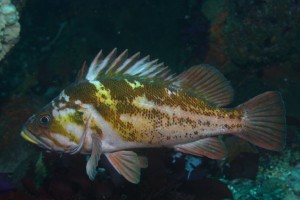
Sacramento – Methylmercury and polychlorinated biphenyls (PCBs) continue to be significant concerns in sport fish surveyed on the California coast, according to a two-year state survey.
The fish survey, conducted by the State Water Resources Control Board’s Surface Water Ambient Monitoring Program (SWAMP), is the largest of its kind ever conducted. It surveyed sport fish from 68 locations spanning 2009 and 2010.
The survey analyzes sport fish because they provide information on potential human exposure to contaminants, and on the condition of the aquatic food web.
The initial screening study is a first step in an effort to identify and quantify contaminants in California’s coastal waters to provide a detailed evaluation of human and wildlife exposure, and to establish priorities for cleanup actions.
More thorough sampling will be required for the California Office of Environmental Health Hazard Assessment to develop recommendations on how often people can eat fish from the different areas.
The 2010 results focused on the relatively undeveloped North and Central coasts. Combined with the 2009 results, they show that methylmercury accumulation in fish is of high concern along much of the California coast. Overall, 63 percent of the locations showed methylmercury contamination at moderate or low levels. The remaining 37 percent of the locations, however, had at least one species in a high contamination category.
Methylmercury can affect the developing nervous system of children and adolescents, potentially leading to learning disabilities. Methylmercury contamination of California coastal waters likely originates from multiple sources, including global emissions to the atmosphere; historic mercury, gold and silver mining; urban and industrial wastewater and storm water; and upwelling from the deep ocean.
PCBs were the only other pollutant that reached concentrations in fish tissue that pose potential health concerns for those who eat fish caught in California coastal waters. Most of the locations sampled (59 percent) had a moderate degree of PCB contamination, and 7 percent were in the high contamination category.
San Francisco Bay and San Diego Bay stood out as having high concentrations of PCBs, while 34 percent of the locations, in more remote areas, had very low concentrations.
PCBs may cause cancer, damage the liver, digestive tract and nerves; and affect development, reproduction and the immune system. PCBs are synthetic chemicals that were used commonly in electrical, industrial and other applications. They are now banned, but they persist in the environment.
Other pollutants, including dieldrin, DDT, chlordanes and selenium were also analyzed, but were not found at high enough concentrations to be a problem.
The Coast Survey was funded by the State Water Resources Control Board’s Surface Water Ambient Monitoring Program (SWAMP) and the United States Environmental Protection Agency. It was performed in close collaboration with the Southern California Bight Regional Monitoring Program and the Regional Monitoring Program for Water Quality in the San Francisco Estuary. The Coast Survey is one component of a new program to track sport fish contamination in all California water bodies. Results from survey of the state’s lakes were reported two years ago, and results from a statewide assessment of contaminants in sport fish from the state’s rivers and streams will be available in May 2013.
The public can access results for individual fishing locations including the Coast Survey and the Lakes Survey through the California Water Quality Monitoring Council’s “My Water Quality” web portal at: www.CaWaterQuality.net (also known as http://www.waterboards.ca.gov/mywaterquality) and click on “Is It Safe to Eat Fish and Shellfish from Our Waters?”
The Coast Survey Report is available on the SWAMP website at: www.waterboards.ca.gov/water_issues/programs/swamp/coast_study.shtml